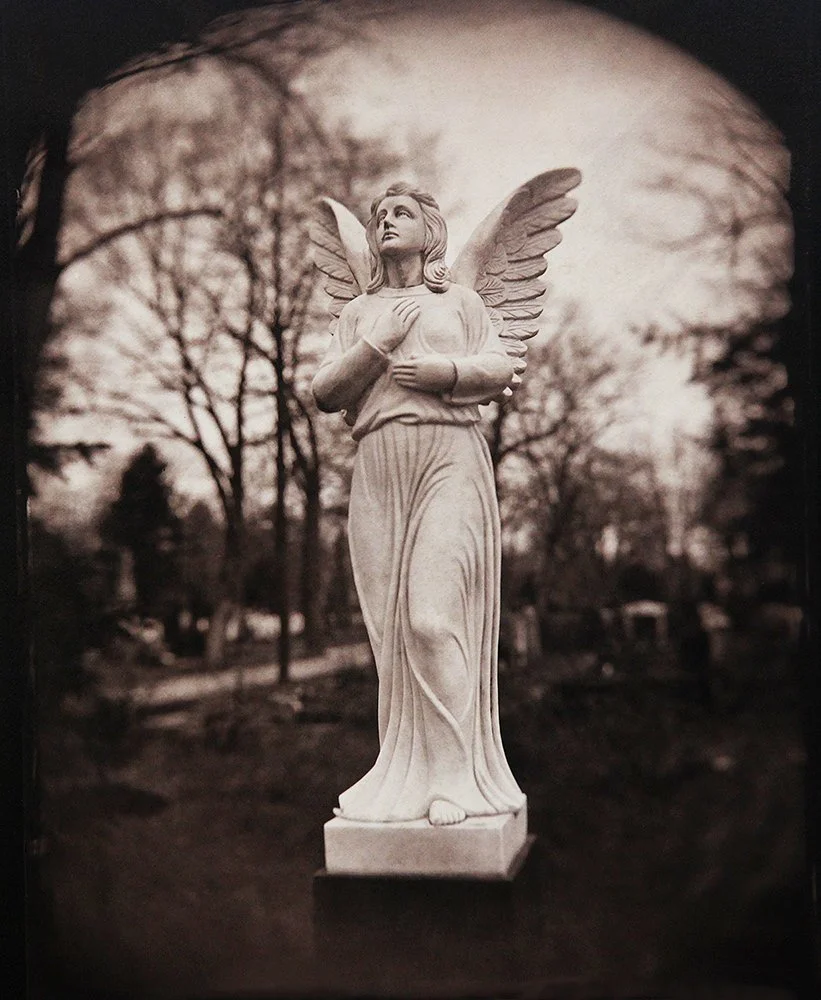Have you ever heard of those words? Probably not.
“Ruptureology” and “rupturegenesis” are words that I’ve created to use with my study of creativity and mortality.
Here are some of my notes on this topic as well as part of a self-directed study on the topic (all draft forms).
Ruptureology
The study and practice of living and creating through rupture.
Ruptureology examines what happens when existential defenses collapse—when illusions, cultural buffers, or inherited meanings no longer hold. It asks: how do we metabolize that collapse into form, meaning, and transformation?
In essence, ruptureology is both a psychology and a poetics of confrontation. It studies the processes—psychological, creative, and cultural—by which individuals and societies either deny or integrate death anxiety. The artist, for example, does not seek to repair rupture but to work within it, turning fragmentation into insight, and terror into trace.
“I don’t condemn the illusions people construct to buffer death anxiety. My interest is in what happens when those illusions collapse—whether creative practice can transform the raw terror of mortality into meaning, rather than violence or denial.” Jacobson, Response to Anxiety (n.d., p. 1)
Rupturegenesis
The generative aftermath of rupture—the birth that follows breakdown.
If ruptureology studies the terrain of collapse, rupturegenesis is the alchemical process by which something new emerges from it. It is the transmutation of existential dread into symbolic residue—art, insight, empathy, or ethical awareness.
Rupturegenesis is not redemption or transcendence; it is the slow, embodied making of meaning within finitude. It is how the artist metabolizes death anxiety into creative output—how “terror becomes trace.”
Alchemy
The symbolic process of transformation. In creative and psychological terms, alchemy is how matter—chemical, emotional, or symbolic—is transmuted into meaning. In the collodion process, silver becomes image through ritual and risk. In ruptureology, anxiety becomes insight through creation.
“The transformation of silver salts into an image isn’t just chemistry; it’s alchemy. That alchemical act becomes a metaphor for the way artists transmute existential terror into meaning.” — Jacobson, SDS Overview or Concept (2025, p. 1)
Collapse
The psychic and cultural moment when death anxiety breaches denial. Collapse reveals the fragility of our worldviews and the insufficiency of our myths. It is the point where symbolic immortality fails—and the raw void becomes visible.
But collapse can also mark the beginning of rupturegenesis: the opening through which new forms of meaning emerge. Artists dwell here—between fracture and formation.
Metabolize
The internal reworking of existential anxiety into creative or ethical form. To metabolize is to take in the unbearable and convert it into expression rather than repression. This word bridges Rank’s distinction between the artist and the neurotic: one chokes on the world, the other chews it into meaning.
“By transforming terror into form, the artist reworks rupture into creative output: an external trace, a witness to mortality.” Jacobson, SDS Overview or Concept (2025, p. 1)
Residue / Trace
The tangible and symbolic remainder of an encounter with mortality. Residue is the mark left behind—the plate, the scar, the sentence, the memory. It is both evidence and echo, proof that meaning once passed through matter. I’ve said these words for years. The art happens in the making. The plate itself is residue; it captures the essence of the moment, the shadow of the sitter (or still life), and the fragility of life.
Witness
The conscious act of seeing and staying with what culture denies. Witnessing is both artistic and ethical; it resists erasure by turning the gaze toward suffering, mortality, and historical trauma. In my practice, witness is not documentation—it’s participation. To witness is to stand in relation to the void and refuse to look away.
Immanence
Meaning found within finitude. Immanence rejects transcendence or escape; it roots significance in the here and now. In ruptureology, immanence is the field in which all transformation occurs—the realization that nothing lies beyond death and that creation itself is the sacred act.
Collapse → Rupture → Metabolize → Trace → Witness → Immanence → Rupturegenesis
This is my through line of rupture—a living process of descent and creation. It maps the cycle through which anxiety becomes art, illusion gives way to insight, and denial is replaced by presence.
Otto Rank’s Personality Types
Rank’s Three Personality Types
Adapted (the “normal” person): Finds security in culture, tradition, religion, consumerism, or ideology. Adapted individuals manage their fear of death by adhering to social norms. Creativity, if expressed, stays within socially approved channels.
Neurotic: Overwhelmed by existential fear. The individual withdraws inward, unable to sublimate their anxiety. “Chokes” on mortality awareness, unable to transform it into external work.
Creative / Artist: Equally exposed to death anxiety, but metabolizes it through art or thought. Reworks inner terror into external form (art, philosophy, writing). They exist in a state of tension with culture, frequently stepping outside its protective illusions.
This framework clarifies that the "normal/adapted" person is not absent; rather, they represent the cultural baseline.
Rank’s Types Through the Lens of Ruptureology (my conversion)
Adapted (Buffered): Aligns with the dominant worldview to avoid rupture. The individual utilizes cultural shields such as religion, nationalism, and consumerism to suppress their awareness of death. Lives are “protected” inside the illusion—death anxiety is smoothed over rather than faced.
Neurotic (Collapsed): The rupture breaks through without mediation. The individual feels overwhelmed by mortality and struggles to transform it into meaning. Anxiety implodes inward, leading to paralysis or dysfunction.
Creative / Artist (Metabolizing Rupture): Confronts the rupture rather than fully denying or collapsing under it. Death anxiety becomes raw material—transformed into art, philosophy, ritual, or resistance. Lives on the edge between denial and confrontation, where meaning is forged.
This dovetails with my Through Line of Rupture:
Buffer → Collapse → Metabolize
The adapted “normal” person lives buffered.
The neurotic collapses under rupture.
The artist metabolizes rupture into creation.
Proximal and distal terror management defenses
Rank (1932/1989) distinguished between the adapted person, the neurotic, and the artist in relation to how each responds to existential anxiety:
“The average man avoids the worst effects of the fear of life and of death by complete adaptation to the collective. He lives not in himself, but in society; he seeks not his own immortality, but to participate in the immortality of the group” (p. 34).
“The neurotic suffers from the same increased consciousness of self as the artist, but he cannot objectify and render it harmless in creative work. He chokes on his own introversions” (pp. 55–56).
“The artist lives the double conflict of the individual and the collective more consciously than others, but he overcomes it in the work of art which creates a new unity of his personality with nature and with humanity. … The artist is able to overcome introversion by projecting his fears into the work of art, where they are mastered, objectified, and given form” (pp. 58, 70).
References:
Jacobson, Q. (n.d.). Response to anxiety [Unpublished manuscript].
Jacobson, Q. (2025, October 3). SDS overview or concept [Unpublished manuscript].
Rank, O. (1989). Art and artist: Creative urge and personality development (C. F. Atkinson, Trans.). W. W. Norton. (Original work published 1932)

